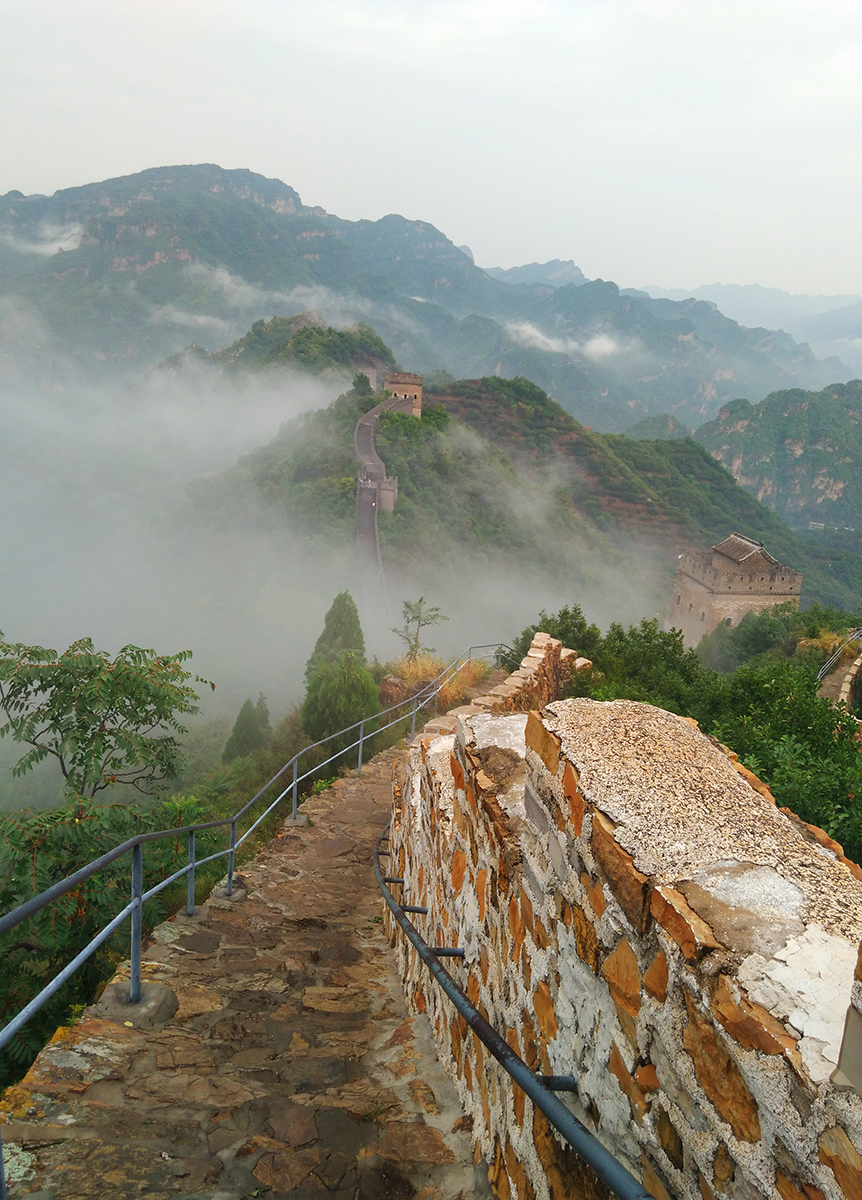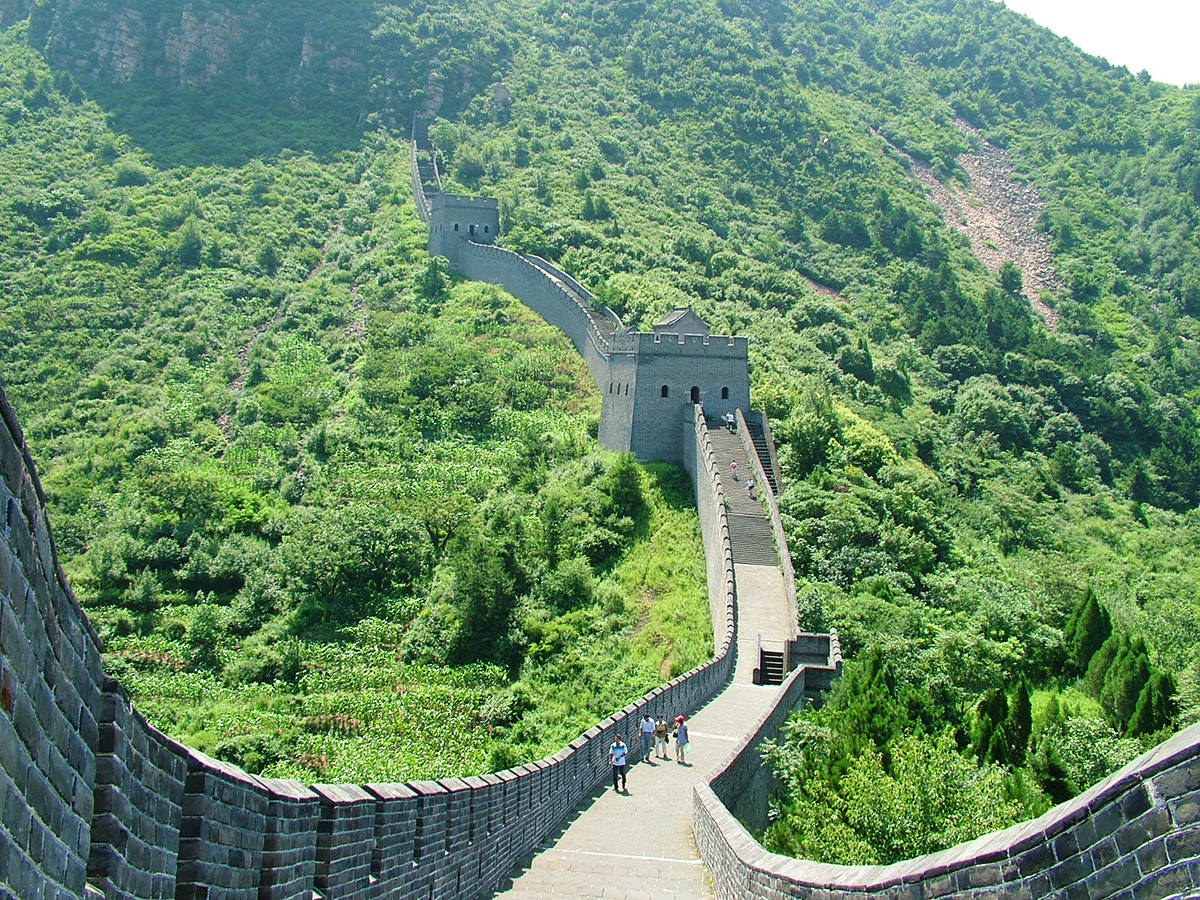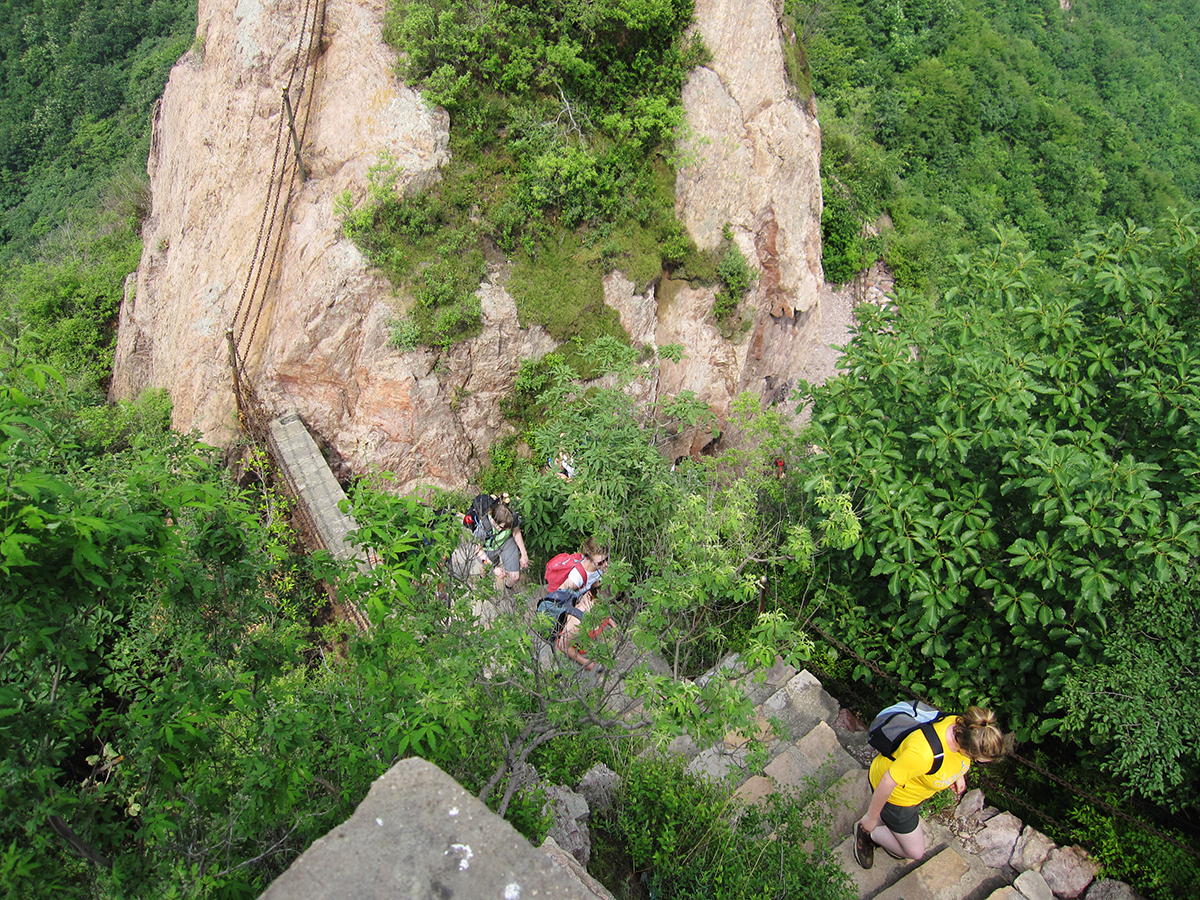
Winding its way through the mountains of Tianjin’s Ji County at an average altitude of 701 metres (2,300 ft.), Huangya or “Yellow Cliff” Pass represents one of the most integral yet overlooked sections of the Great Wall. Its unusual name is derived from the cliff rocks to the east of the pass, as they are mostly yellow in colour. At sunset, they are said to appear as though gilded in gold. The Huangya section actually stretches for a whopping 42 kilometres (26 mi), from Malan Pass in Hebei province to Jiangjun Pass in Beijing. As part of the Great Wall, it was designated a UNESCO World Heritage Site in 1987.
It was originally constructed sometime during the Northern Qi Dynasty (550-577 AD), but was rebuilt and reinforced with bricks and towers by a military general named Qi Jiguang during the Ming Dynasty (1368-1644). As if that wasn’t enough, it was heavily renovated in 1984 as part of an incentive proposed by politician Deng Xiaoping to “Love China, Restore the Great Wall”. This colossal renovation project meant that over 3 kilometres (2 mi) of the Huangya section, including 20 watchtowers, one pass fort, and one gatehouse, were given a much-needed facelift! Nowadays, although it may not appear as authentic or “wild” as other parts of the Great Wall, Huangya Pass is the ideal place for a challenging historical hike without having to battle the tourist crowds.
Nicknamed the Eight Trigrams Fortification City, the pass is known for the 40 crisscrossing streets within its walls, which were designed after the shape of the Bagua(1) or “Eight Trigrams” symbol. At the centre of this labyrinthine system lies the Great Wall Museum, which once served as the Dispatcher’s Office during the Ming Dynasty. With spectacular exhibits of the weapons and items used by soldiers patrolling the Great Wall, it offers a fascinating insight into what life was like during the height of the wall’s importance. The museum also highlights the strategic military significance that this stretch of the wall once held. Watchtowers form a focal part of this section. They are either solid or hollow and come in a variety of shapes, from round to square.

While the watchtowers are a common feature throughout any part of the Great Wall, the Huangya Water Gate is reasonably unique to Huangya Pass. This giant bridge spanning the nearby river was built with five arches, which could be closed or opened in order to enable or impede the flow of water. During wartime, the arches would be closed and soldiers would settle gun barrels along the battlements of the bridge in order to defend against any enemy utilising the waterway. In short, Ming soldiers knew how to handle themselves during a water fight!
Another unusual feature of this section is the Huangya Sky Ladder, the steepest stairway along this stretch of wall. Its nickname derives from the fact that it appears to rise at an almost vertical slant and, from its base, it looks as though it leads straight to the sky! Once you’ve conquered this challenging climb, you’ll be treated to a panoramic view of a primitive stretch of the Great Wall that dates back to the Northern Qi Dynasty.
On the opposite end of the Huangya section, you’ll find Taipingzhai or the Taiping Mountain Stronghold. Spanning just 1,000 metres (3,281 ft.), it once played a focal role as a vital mountain fortress during the Ming Dynasty. A statue of Qi Jiguang marks the entrance, commemorating the general whose noble efforts helped to protect China’s northern borders. To the west of the main stronghold lies the Widow Tower, a two-storey square beacon tower that was built using funds donated by twelve widows whose husbands lost their lives while building the wall. If you look closely, you’ll notice intricate dragon’s head sculptures and statues of qilins (Chinese unicorns), phoenixes, and lions crouching on the eaves of its roof.

Although you can enter the Huangya section at the Huangya Pass entrance, it’s usually recommended that you start your hike from the Taiping Mountain Stronghold entrance, since the downhill slant will provide you with some respite from the wall’s mercilessly steep stairways. Once you reach the pass, which typically takes between two to three hours, there are plenty of farmhouses dotted about serving up fresh, rustic meals for weary hikers. If a leisurely pace is too slow for your speedy sensibilities, you can always consider taking part in the Great Wall Marathon!
Every year in May, a marathon race is held along the Huangya section of the Great Wall, with thousands of runners taking part annually. While there are now numerous marathons being held on other sections of the Great Wall, the Huangya marathon is one of the oldest and has been held since 1999. Over time, its popularity around the world meant it developed into an international event that is now acknowledged by the Association of International Marathons and Distance Races (AIMS). The full marathon covers the entire 42 kilometres (26 mi) of the Huangya section, although there is an optional half marathon, 10-kilometre (6 mi) run, 5-kilometre (3 mi) run, and child-friendly 8.5 kilometre (5 mi) Fun Run. If you think the run is too difficult, just remember: this was all in a day’s work for a Ming Dynasty soldier!
(1) Bagua: The eight trigrams used in Taoist philosophy to represent the fundamental principles of reality. In their most simplified form, they symbolise the sky, the lakes, fire, thunder, wind, water, mountains and earth respectively.